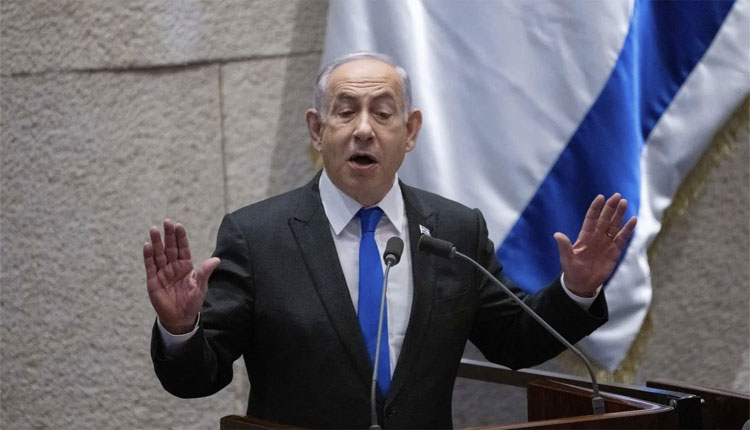Jerusalem: The ongoing conflict between Israel and Hezbollah shows no signs of abating, as Israel has dismissed the United States’ ceasefire proposal and instructed its military to intensify operations against the Lebanese militant group.
In a fervent address to the United Nations General Assembly, Israeli Prime Minister Benjamin Netanyahu placed the blame squarely on Iran for escalating tensions in the region. Netanyahu unveiled two striking maps during his speech, both conspicuously omitting Palestine—a move that has sparked widespread analysis and concern among international observers.
The first map depicted the Middle East with Iran, Iraq, Syria, and Yemen shaded in black, labelled ominously as “The Curse.” In stark contrast, a second map highlighted countries such as Egypt, Sudan, Saudi Arabia, and India in green, marked as “The Blessing.” The deliberate exclusion of Palestine from both maps has led to speculation about Israel’s stance on Palestinian statehood amidst the current turmoil.
Green Zones of Alliance
The countries highlighted in green signify nations that Israel considers allies or beneficial partners. The inclusion of India is particularly noteworthy, reflecting the strengthening ties under Prime Minister Narendra Modi’s administration. Collaboration in defence and technology sectors has flourished, marking a significant pivot in Indo-Israeli relations.
Saudi Arabia’s presence on the “Blessing” map underscores the complex dynamics following the normalization agreement brokered by the United States. Although progress stalled after the recent Gaza attacks, Saudi Arabia maintains that normalization with Israel hinges on the establishment of a Palestinian state. Nonetheless, Israel remains optimistic about future diplomatic engagements with Riyadh.
Egypt and Sudan also feature prominently among the green countries. Egypt’s role in mediating Gaza-related issues remains crucial, despite fluctuating tensions. Energy and security cooperation between Egypt and Israel has seen considerable enhancement, highlighted by Egypt’s importation of Israeli gas. Sudan’s inclusion follows its signing of the Abraham Accords in 2021, a significant turnaround from decades of animosity under former President Omar al-Bashir.
Black Zones of Conflict
Conversely, the black-shaded countries—Iran, Iraq, Syria, and Yemen—are denoted as sources of instability. Netanyahu’s speech heavily criticized Iran, accusing Tehran of fueling violence across Lebanon, Syria, and Yemen through financial and military support to Hezbollah, Hamas, and the Houthis. This denunciation underscores Israel’s view of Iran as the principal adversary exacerbating regional conflicts.
The current trajectory suggests that without timely resolution, the Middle East could face further deterioration, resulting in significant loss of life and property. The international community remains on edge as diplomatic efforts continue to seek a sustainable ceasefire and address the underlying tensions that threaten regional stability.



Comments are closed.